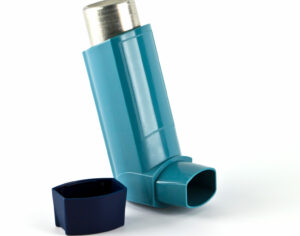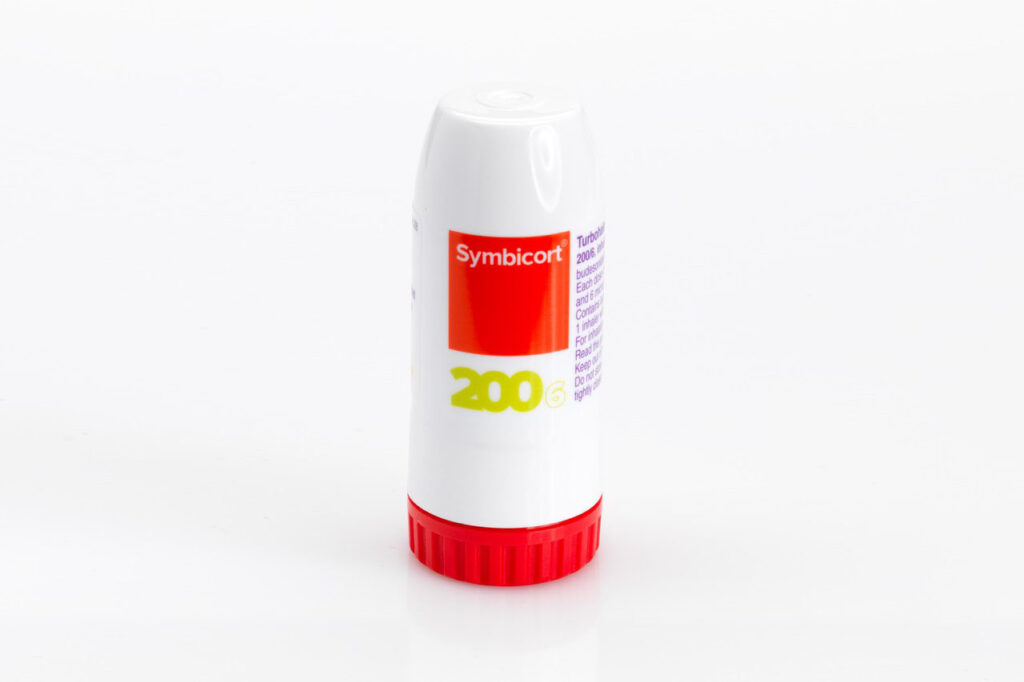Better and greener asthma care is about improving patient care and increasing patient choice.
Prevention is better than cure!
Asthma care in the UK needs improvement. The UK has one of the highest asthma mortality rates in Europe. Reliance on reliever inhalers (usually blue) is high in the UK and we know that if people with asthma need 3 or more reliever inhalers a year, this is associated with a much higher risk of asthma attacks and hospitalisation.
Asthma results in inflammation of the lining of the airways. When inflamed airways encounter triggers (cold air, damp housing, air pollution, allergens, smoke etc) they narrow further, causing symptoms and asthma attacks.
The goal of asthma care is to be symptom-free with no restriction on activities. Unfortunately, many people with asthma continue to experience symptoms such as wheeze, cough and chest tightness and have avoidable asthma attacks. Many people are over-reliant on their ‘reliever’ (blue) inhaler. These inhalers are important during symptoms, as they temporarily open airways, but they do not treat the underlying airway inflammation.
Inhaled corticosteroids (preventer inhalers) are the main treatment for asthma. Taken every day, as prescribed, they reduce the inflammation of the airway lining and therefore prevent symptoms and asthma attacks. Some people think we should call preventer inhalers ‘treatment’ inhalers and reliever inhalers ‘rescue’ inhalers to help better communicate how they should be used.
If we can optimise asthma control, people will need fewer reliever inhalers. Reliever inhalers are responsible for more than 2/3rd of the inhaler carbon footprint. Better for patients and planet.
Which inhaler device?
The other consideration for better and greener asthma care is the type of inhaler device prescribed. Asthma care in the UK is dominated by metered dose inhalers (MDIs), sometimes called puffers, which constitute approximately 70% of all the inhalers prescribed. Most of our European neighbours prescribe fewer than 50% MDIs and in Sweden the figure in 13%.



MDIs have a very high carbon footprint because the canisters contain powerful propellant gases which are approximately 1000-3000 times more powerful than carbon dioxide equivalent. These propellant gases are why MDIs are responsible for 13% of the carbon emissions that the NHS directly controls. Dry powder inhalers (DPIs) do not contain propellant gas and so have a vastly lower carbon footprint.
So which inhaler is best? This is a shared decision with each individual patient and NICE have produced a decision aid to help this conversation. The most important consideration is what type of breath in, a person can take. So, checking inhaler technique is a good place to start. Good inhaler technique ensures that medicine gets into airways. It is worth knowing that if when you use an MDI you can feel medicine at the back of your throat, it probably isn’t getting to where it is needed!
DPIs require a quick and deep breath in, and MDIs require a slow and steady breath in and are usually best used with a spacer device. Most people with asthma can take a quick and deep breath in. In my experience, I find many patients tend to use a quick and deep breath in with their MDI and are better suited to a DPI. DPIs don’t require spacers and come with dose counters which may help people keep track of their medication use. Many patients find DPIs easier and more convenient to use and therefore better for their disease control. People who are using an MDI effectively, may still want to be offered the choice of a greener inhaler that works well for them.
Remember that a small proportion of patients cannot take the quick and deep breath in that DPIs require and should remain on MDIs. This may include children under 12, the very elderly and those with severe asthma. For patients who need or prefer MDIs, we can still reduce the prescribing carbon footprint by optimising treatment, swapping to an equivalent MDI brand with a lower-carbon footprint and changing regimes so that fewer inhalers are needed.
Don’t bin it!
Finally, a word on inhaler disposal. We should advise all patients to return unused and unwanted inhalers to the pharmacy. If MDIs are put in the bin they may end up in landfill and their powerful greenhouse gases will be released into the atmosphere. Pharmacies can send inhalers for incineration which degrades the propellant gases and in future they may be able to recycle inhalers.
Useful Resources
Humber and North Yorkshire Health and Care Partnership supports the achievement of better and greener asthma care. As I have explained, these two goals work together, helping to improve patient care and increase patient choice.
I have developed a step-by-step quality improvement toolkit to help practices achieve better and greener asthma care which can be accessed here. This includes, searches, SMS templates, and patient education videos and leaflets.
This introductory video explains how it can help:
I have also recently supported Red Whale write a PEARL (a weekly bite sized shiny bead of information) on sustainable asthma care which was published this month and can be read here.
These resources can help support practices to improve the quality of their asthma care processes and prescribing safely and effectively.
You can read more about Asthma Care and Inhalers at the Asthma UK website or the NHS website.
